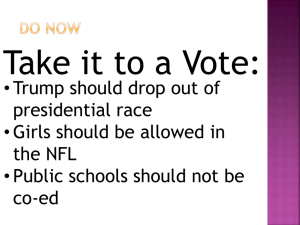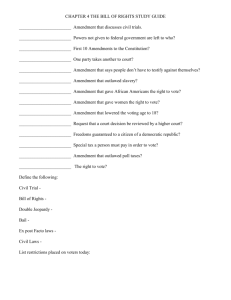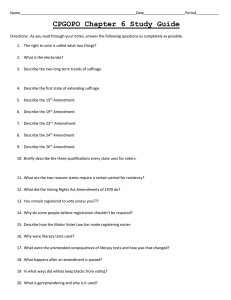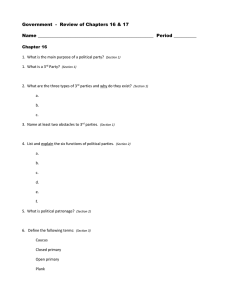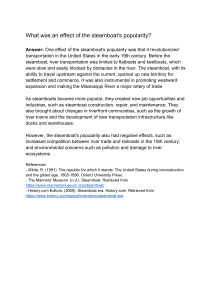Chapter 12: Industrial Revolution Study Guide Name__________________ nationalism
advertisement
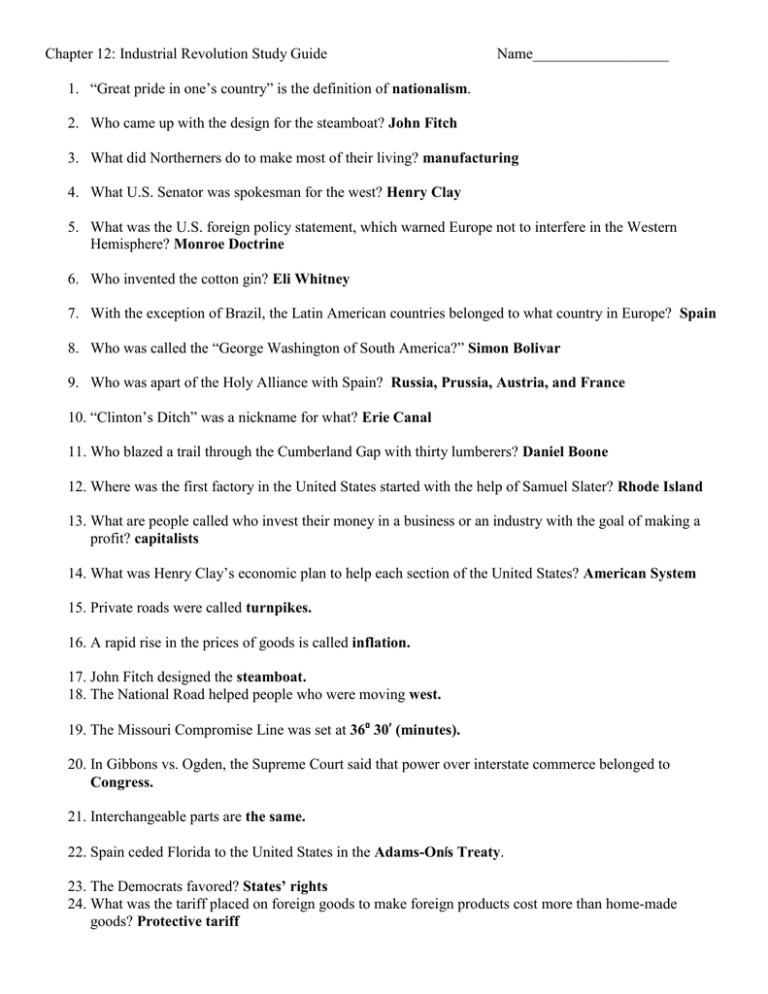
Chapter 12: Industrial Revolution Study Guide Name__________________ 1. “Great pride in one’s country” is the definition of nationalism. 2. Who came up with the design for the steamboat? John Fitch 3. What did Northerners do to make most of their living? manufacturing 4. What U.S. Senator was spokesman for the west? Henry Clay 5. What was the U.S. foreign policy statement, which warned Europe not to interfere in the Western Hemisphere? Monroe Doctrine 6. Who invented the cotton gin? Eli Whitney 7. With the exception of Brazil, the Latin American countries belonged to what country in Europe? Spain 8. Who was called the “George Washington of South America?” Simon Bolivar 9. Who was apart of the Holy Alliance with Spain? Russia, Prussia, Austria, and France 10. “Clinton’s Ditch” was a nickname for what? Erie Canal 11. Who blazed a trail through the Cumberland Gap with thirty lumberers? Daniel Boone 12. Where was the first factory in the United States started with the help of Samuel Slater? Rhode Island 13. What are people called who invest their money in a business or an industry with the goal of making a profit? capitalists 14. What was Henry Clay’s economic plan to help each section of the United States? American System 15. Private roads were called turnpikes. 16. A rapid rise in the prices of goods is called inflation. 17. John Fitch designed the steamboat. 18. The National Road helped people who were moving west. 19. The Missouri Compromise Line was set at 36° 30’ (minutes). 20. In Gibbons vs. Ogden, the Supreme Court said that power over interstate commerce belonged to Congress. 21. Interchangeable parts are the same. 22. Spain ceded Florida to the United States in the Adams-Onís Treaty. 23. The Democrats favored? States’ rights 24. What was the tariff placed on foreign goods to make foreign products cost more than home-made goods? Protective tariff 25. What country did the Industrial Revolution begin in? Great Britain 26. Robert Fullton’s steamboat was called the Clermont. 27. Who developed the water frame, a water-powered device that held many more spindles and produced thread faster? Richard Arkwright 28. In McCullough vs. Maryland, the Supreme Court said that states could not tax the national government. 29. Safeguards put into the Constitution to ensure that one branch did not become more powerful than another branch is called checks and balance system. 30. Apartheid was the South African policy of separating people based on their race. Policies such as these promote discrimination. 31. As a result of Canada’s history of exploration and settlement, the two major languages spoken in Canada are French and English. 32. The Commonwealth of Kentucky is responsible for laws governing state parks. 33. What are prairies, steppes, and savannas? Grassland regions 34. What waterway constructed in Central America had the greatest impact on the increase of trade between the Atlantic and Pacific coasts of the United States? Panama Canal 35. Increased productivity in business contributes to economic growth. 36. One way a president can check or limit the power of Congress is to veto a bill. 37. In the United States economy, one purpose of the government is to establish rules and regulations that allow businesses to compete fairly. 38. In ancient Greece, male citizens over the age of 18 met in the Athenian Assembly every month to debate and vote on laws. This type of government in which citizens have the right to vote is called a direct democracy. 39. What does rural mean? Farmland, sparsely populated 40. The legislative branch of the federal government includes the House of Representatives and the Senate. 41. At the beginning of the Revolutionary War, the Americans had the advantage of having? motivation for independence 42. Serving on juries, obeying laws, and voting in elections are examples of responsibilities of US citizens. 43. The signing of the Magna Carta was important because it did what? Established principle of limited governmental power 44. Which amendment ended slavery? 13th 45. Which amendment gave women the right to vote? 19th 46. Which amendment lowered the voting age from 21 to 18? 26th 47. He called for the colonists to use Common Sense and gain their independence? Thomas Paine 48. A settlement made in another land by people who are ruled by their home countries is called? colony 49. Geographers divide the world into regions that have something in common. 50. People, ideas, language, religion, and history are examples of what? Cultural features


